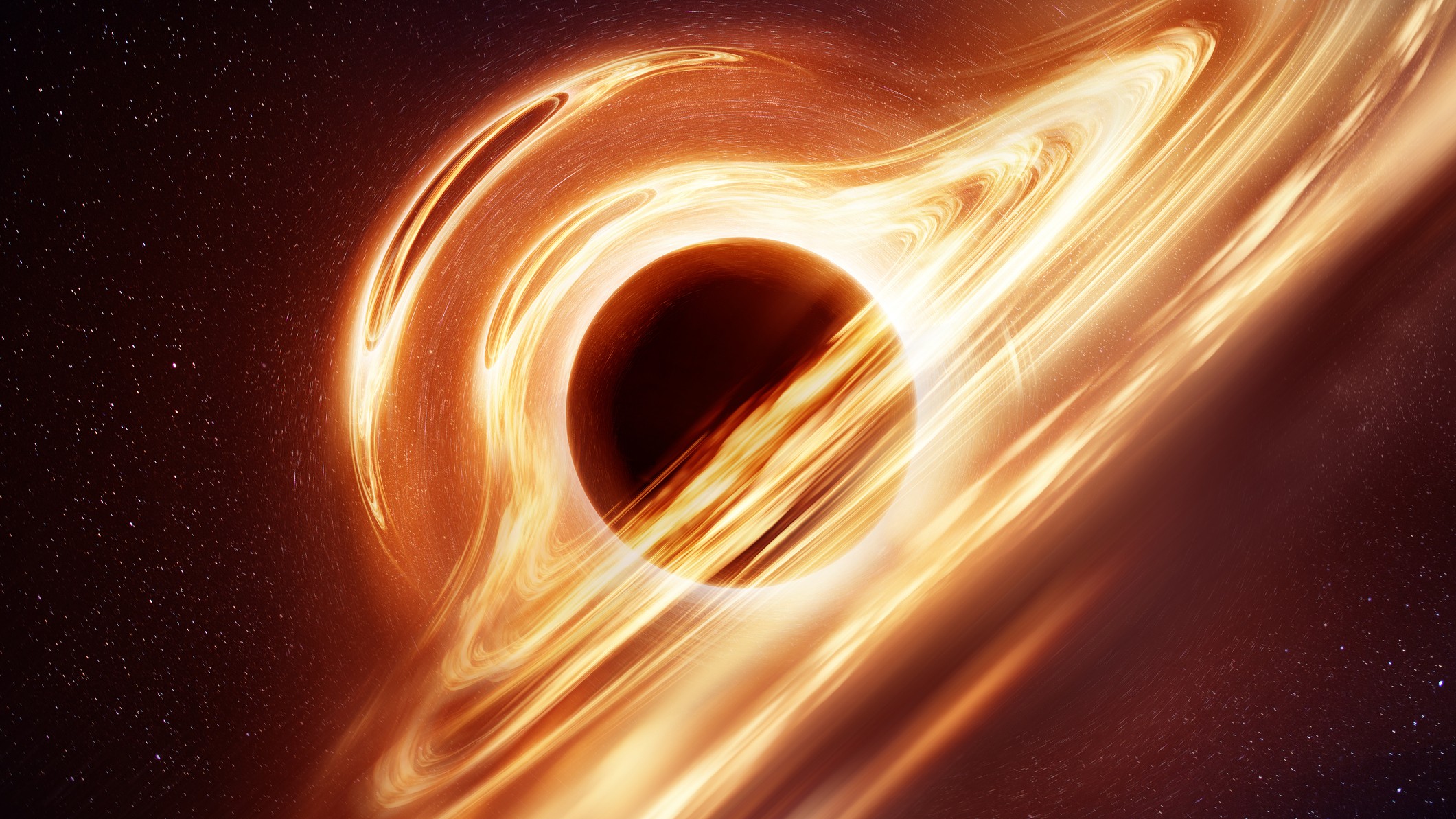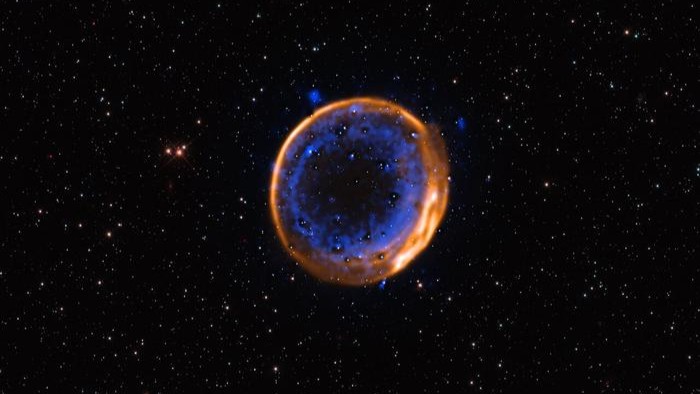
Black holes form natural time machines that allow travel to both the past and the future. But don’t expect to be heading back to visit the dinosaurs any time soon.
At present, we don’t have spacecraft that could get us anywhere near a black hole. But, even leaving that small detail aside, attempting to travel into the past using a black hole might be the last thing you ever do.
What are black holes?
A black hole is an extremely massive object that is typically formed when a dying star collapses in on itself.
Like planets and stars, black holes have gravitational fields around them. A gravitational field is what keeps us stuck to Earth, and what keeps Earth revolving around the Sun.
As a rule of thumb, the more massive an object is, the stronger its gravitational field.
Earth's gravitational field makes it extremely difficult to get to space. That’s why we build rockets: we have to travel very fast to break out of Earth's gravity.
Read more: How gravitational waves can 'see inside' black holes
Get the world’s most fascinating discoveries delivered straight to your inbox.
The gravitational field of a black hole is so strong that even light can't escape it. That's impressive, since light is the fastest thing known to science!
Incidentally, that’s why black holes are black: we can't bounce light off a black hole the way we might bounce a flashlight's beam off a tree in the dark.
Stretching space
Albert Einstein's general theory of relativity tells us matter and energy have a curious effect on the universe. Matter and energy bend and stretch space. The more massive an object is, the more space is stretched and bent around it.
A massive object creates a kind of valley in space. When objects come near, they fall into the valley.

That's why, when you get close enough to any massive object, including a black hole, you fall towards it. It's also why light can't escape a black hole: the sides of the valley are so steep that light isn't going fast enough to climb out.
The valley created by a black hole gets steeper and steeper as you approach it from a distance. The point at which it gets so steep that light can't escape is called the event horizon.
Event horizons aren't just interesting for would-be time travellers: they're also interesting for philosophers, because they have implications for how we understand the nature of time.
Stretching time
When space is stretched, so is time. A clock that is near a massive object will tick slower than one that is near a much less massive object.
A clock near a black hole will tick very slowly compared to one on Earth. One year near a black hole could mean 80 years on Earth, as you may have seen illustrated in the movie Interstellar.
In this way, black holes can be used to travel to the future. If you want to jump into the future of Earth, simply fly near a black hole and then return to Earth.
If you get close enough to the centre of the black hole, your clock will tick slower, but you should still be able to escape so long as you don't cross the event horizon.
Loops in time
What about the past? This is where things get truly interesting. A black hole bends time so much that it can wrap back on itself.
Imagine taking a sheet of paper and joining the two ends to form a loop. That's what a black hole seems to do to time.
This creates a natural time machine. If you could somehow get onto the loop, which physicists call a closed timelike curve, you would find yourself on a trajectory through space that starts in the future and ends in the past.
Inside the loop, you would also find that cause and effect get hard to untangle. Things that are in the past cause things to happen in the future, which in turn cause things to happen in the past!
The catch
So, you've found a black hole and you want to use your trusty spaceship to go back and visit the dinosaurs. Good luck.
There are three problems. First, you can only travel into the black hole's past. That means that if the black hole was created after the dinosaurs died out, then you won’t be able to go back far enough.
Second, you'd probably have to cross the event horizon to get into the loop. This means that to get out of the loop at a particular time in the past, you'd need to exit the event horizon. That means travelling faster than light, which we're pretty sure is impossible.
Third, and probably worst of all, you and your ship would undergo "spaghettification." Sounds delicious, right?
Sadly, it's not. As you crossed the event horizon you would be stretched flat, like a noodle. In fact, you'd probably be stretched so thin that you'd just be a string of atoms spiralling into the void.
So, while it's fun to think about the time-warping properties of black holes, for the foreseeable future that visit to the dinosaurs will have to stay in the realm of fantasy.
This article is republished from The Conversation under a Creative Commons license. Read the original article.

Sam Baron is an associate professor at the Australian Catholic University whose areas of expertise include metaphysics, philosophy of science, philosophy of mathematics, philosophy of time and metaphilosophy. Sam completed his PhD in philosophy 2012 at the University of Sydney. Since then, he has published widely on topics in metaphysics and philosophy of science, in a range of philosophy journals.
